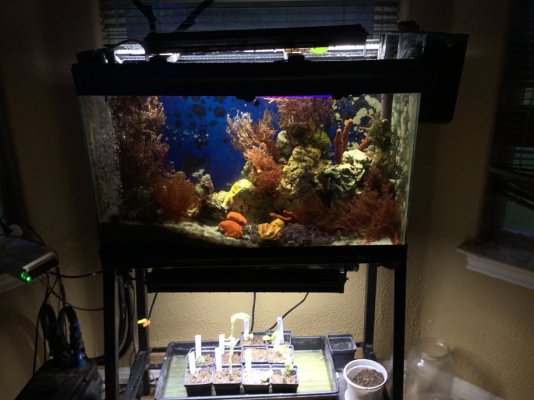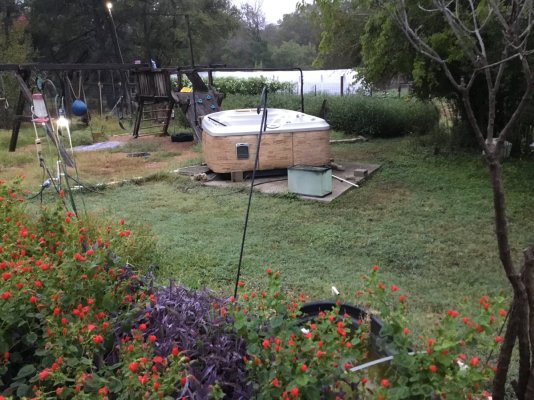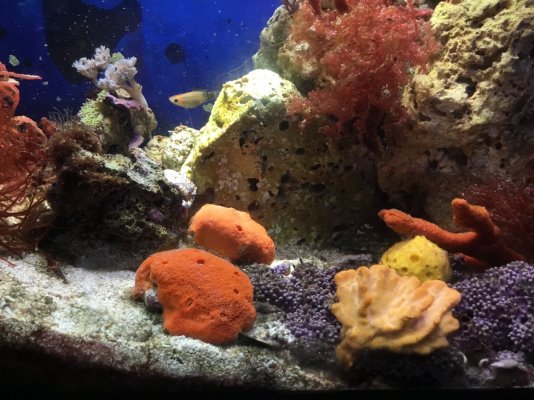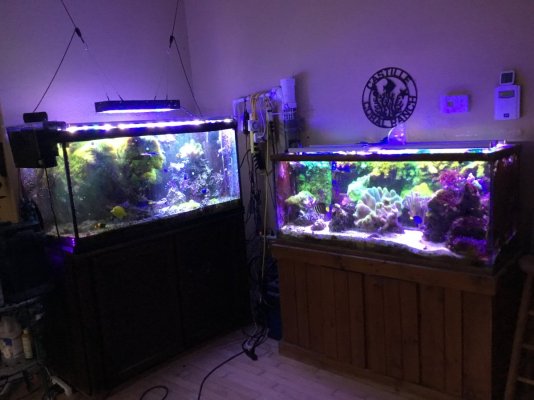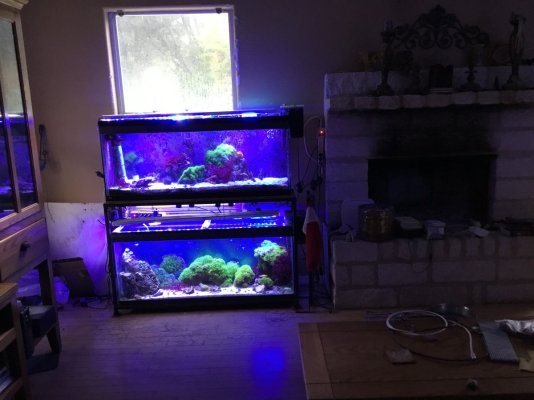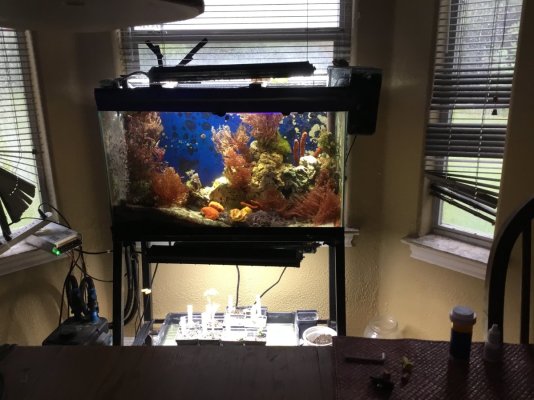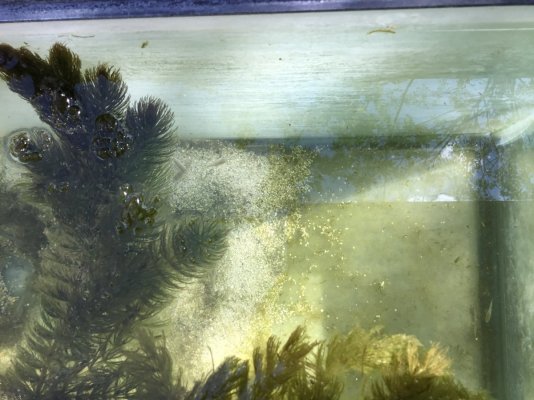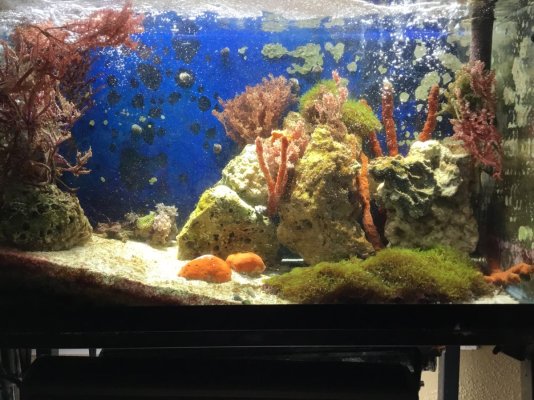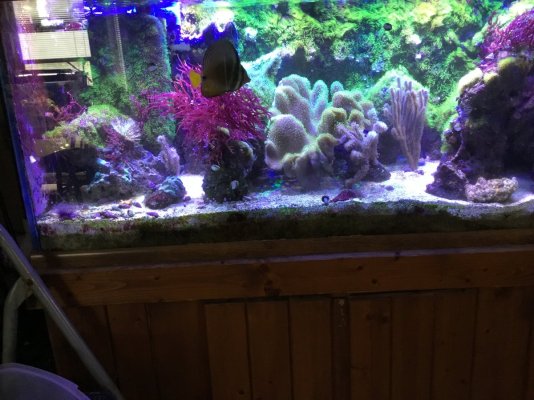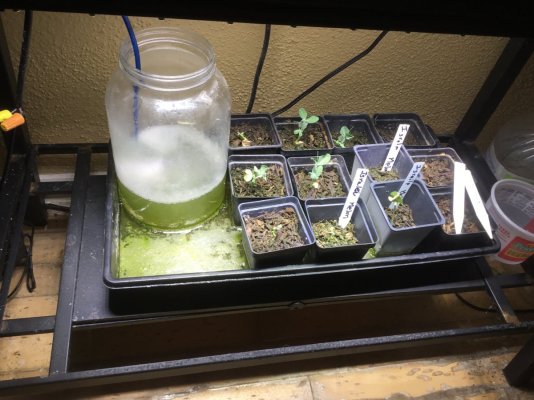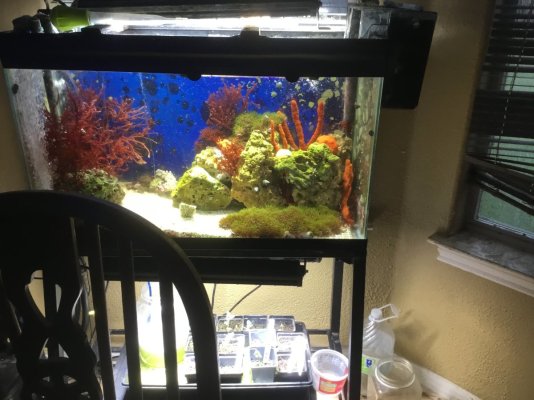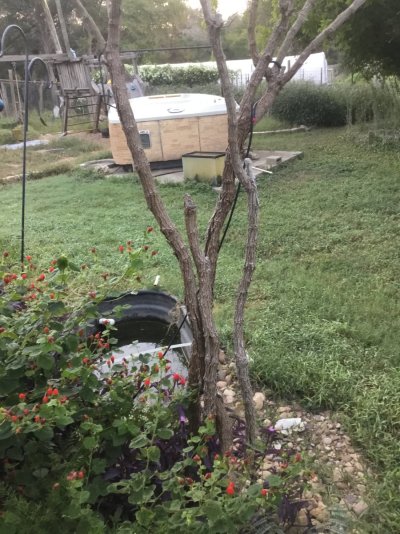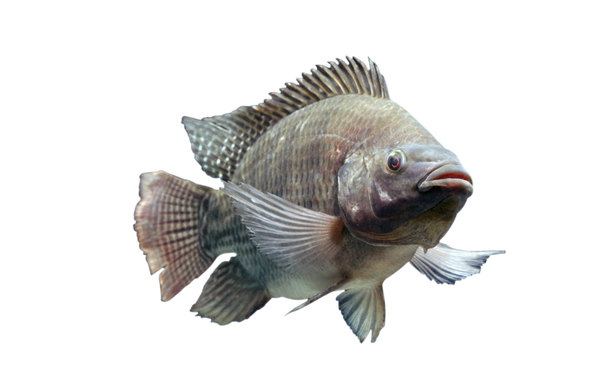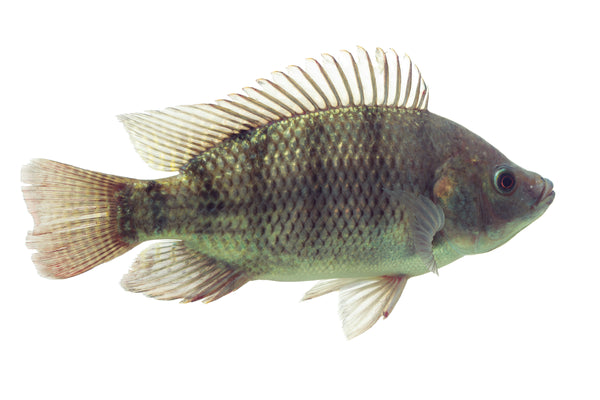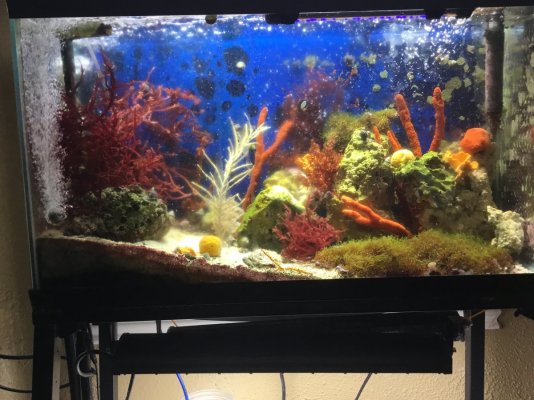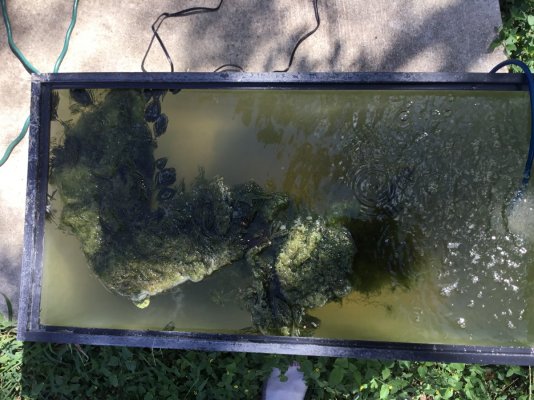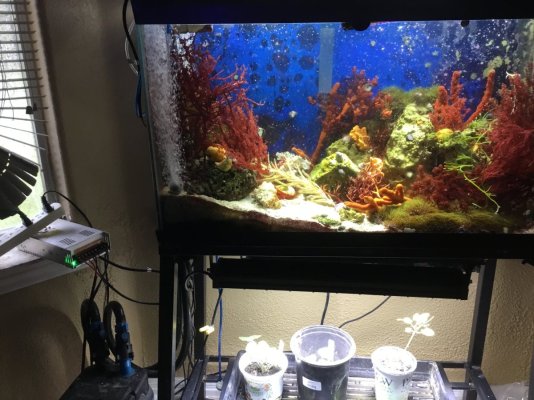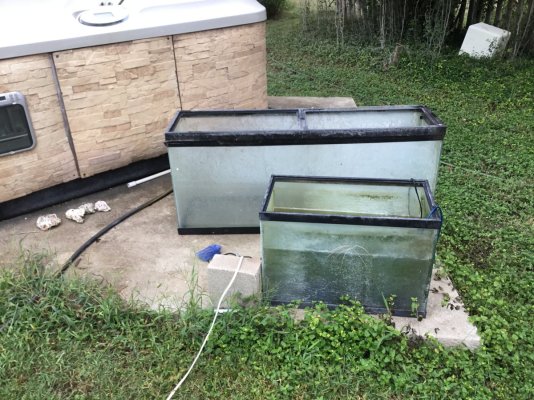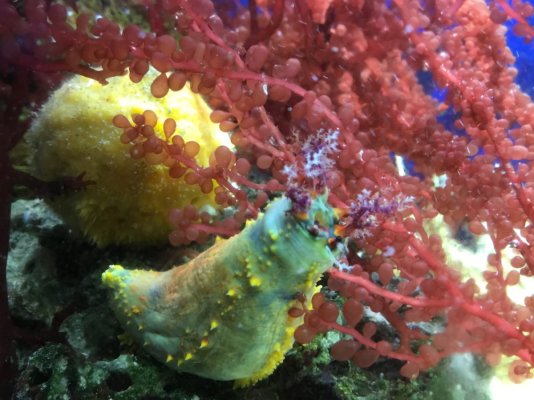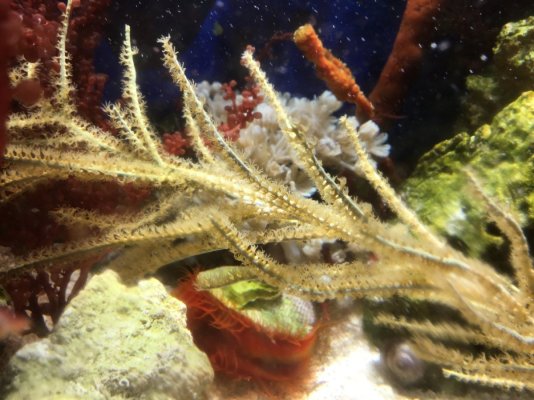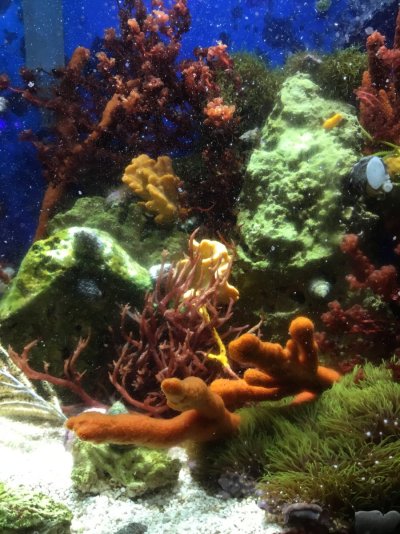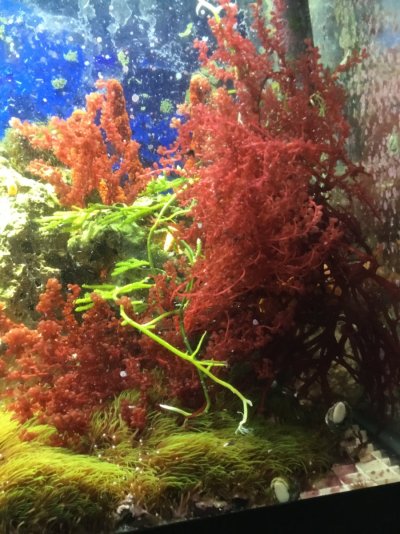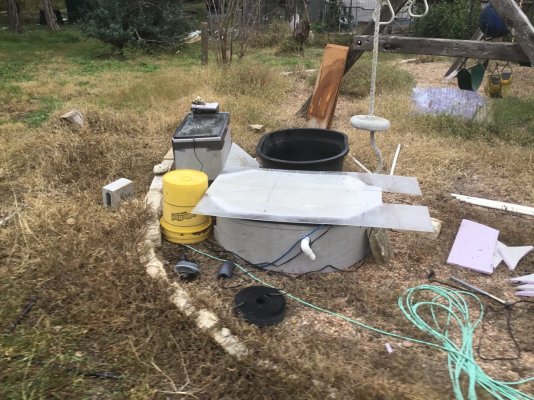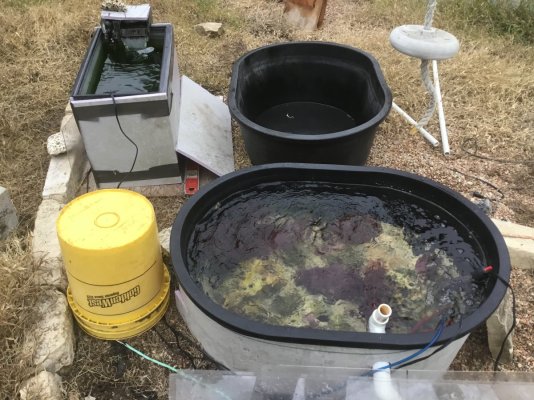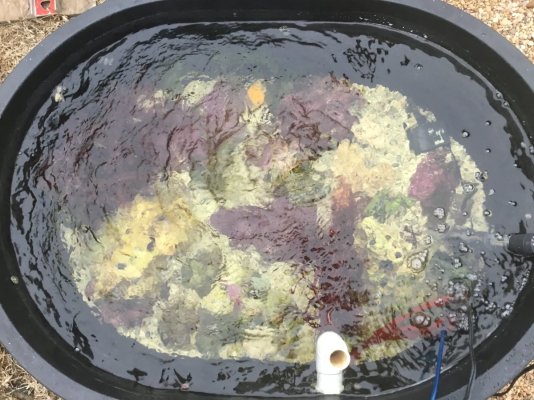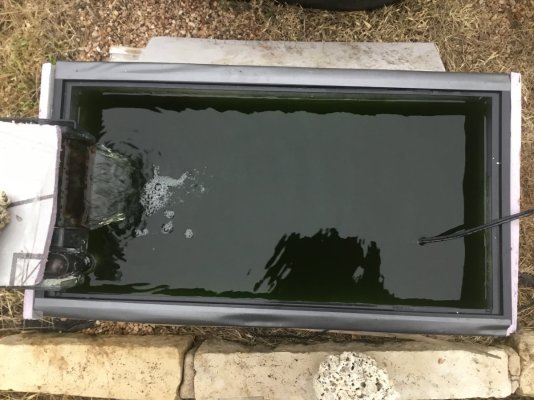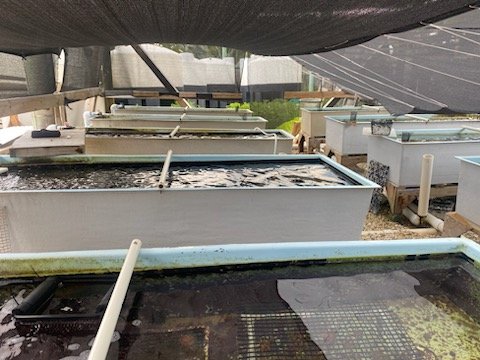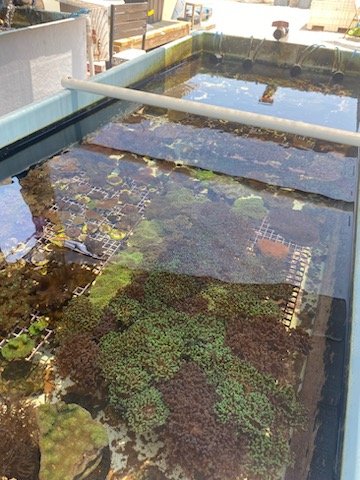When I first attempted mariculture in a greenhouse, I established tight temperature control and quickly realized that during the winter in Austin, Tx heating water to maintain temperatures in the 70 was cost prohibitive for business. So, I decided to loosen up my temperature controls to go into the lower 60’s. Equally important for mariculture is controlling nuisance algae. As in our reef aquariums, I strive to match nuisance with a natural control. Grazers come in many forms: amphipods, copods, lawnmower blennies & tangs of many colors.
In my many sojourns, I have come upon the humble molly as a good biological control for algae. Recently, in an effort to control nuisance string algae in fresh water lilly ponds, I came across Blue Israeli Tilapia that thrive in full strength ocean down to 50 degrees. Yesterday, I received 80 Israeli Tilapia to be included in water lilly ponds with gambesi, comet gold fish and koi. I will experiment with a 30G aquarium and 10 Israeli Tilapia and acclimate to full strength salt water. Then I will have cultivated a true janitor for soft coral & ornamental macro grow-out tanks.
In my many sojourns, I have come upon the humble molly as a good biological control for algae. Recently, in an effort to control nuisance string algae in fresh water lilly ponds, I came across Blue Israeli Tilapia that thrive in full strength ocean down to 50 degrees. Yesterday, I received 80 Israeli Tilapia to be included in water lilly ponds with gambesi, comet gold fish and koi. I will experiment with a 30G aquarium and 10 Israeli Tilapia and acclimate to full strength salt water. Then I will have cultivated a true janitor for soft coral & ornamental macro grow-out tanks.




